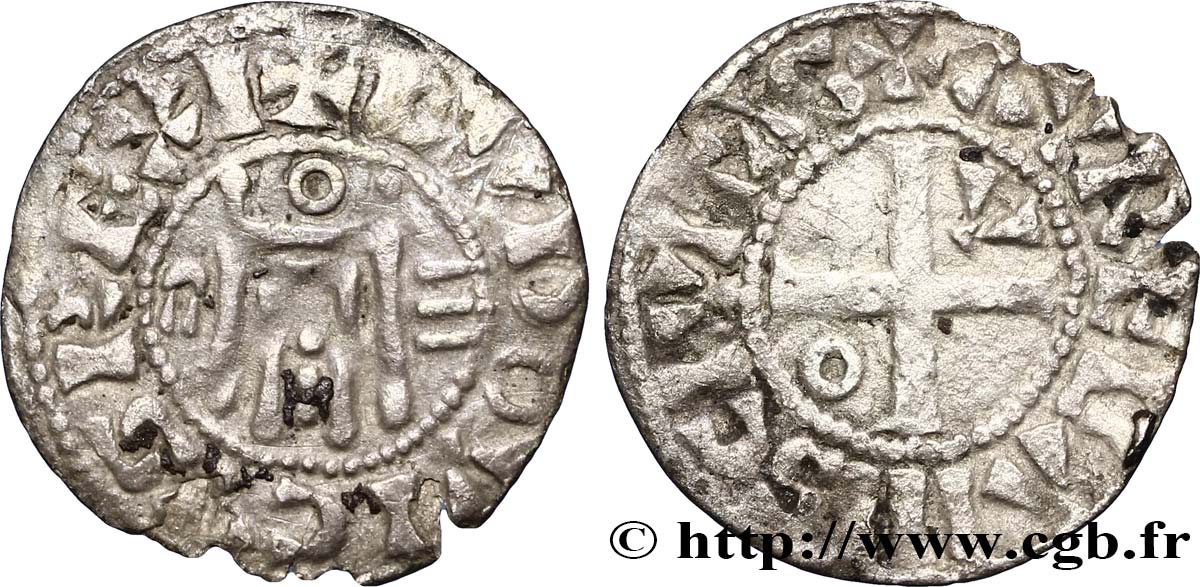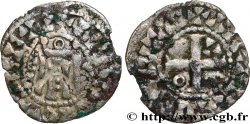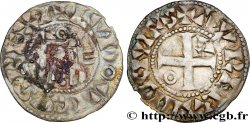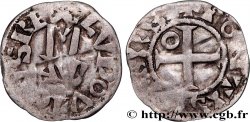Obverse
Obverse legend : + LVDOVICVS REX I.
Obverse description : Porte de ville accostée à droite de trois barres superposées, au-dessus d'un O, à gauche de III ; quatre besants en cœur.
Obverse translation : (Louis, roi).
Reverse
Reverse legend : + AVRELIANIS CIVITAS.
Reverse description : Croix cantonnée au 2 d'un A, au 3 d'un O.
Reverse translation : (Cité d'Orléans).
Historical background
LOUIS VI "THE FAT"
(07/29/1108-08/1/1137)
After the weak kings of the 11th century, Louis VI, son and successor of Philippe I, inaugurated the triumphal march of the Capetian monarchy towards the unity of the kingdom and, beyond the Middle Ages, towards absolutism.. One then sees appearing around the king characters like Étienne de Garlande, favorite of Louis VI, chancellor and seneschal of France, Suger, abbot of Saint-Denis, Raoul de Vermandois, Capetian prince, often at the head of the army, who form a first embryo of government. With the help of this team, Louis VI carried out the submission of the petty lords of Ile-de-France, such as Hugues du Puiset or Thomas de Marle.. Leaving the traditional zone of influence of the dynasty, he intervened militarily in Bourbonnais, Auvergne and Flanders.. The main adversary remained the King of England and Duke of Normandy, then Henry I Beauclerc, last of the sons of William the Conqueror (1100-1135). A first war opposed the two sovereigns in 1109-1113, a second in 1116-1120. Both also ended in French defeats. The sinking of the Blanche-Nef (November 25, 1120), where Henry's eldest son perished and almost the entire Anglo-Norman royal family undertook to avenge the Capetian. The Third War, which began in 1123, only ended with the death of the King of England. In 1127, Henri Beauclerc had married his only surviving child, his daughter Mathilde, to Geoffroy d'Anjou: from this marriage would come the empire of the Plantagenêts. If Louis VI's foreign policy and military operations were not always successful, he was more successful at home.. The alliance of the monarchy with the episcopate and the clergy continued to tighten under his reign and allowed him to extend his influence well south of the Loire, where his arms could not yet reach.. Capetian power was now recognized as a ferment of unity: in 1124, when Emperor Henry V threatened to invade the kingdom, all the feudal contingents of northern France came to join the royal banner. From Adelaide of Savoy, married in 1115, Louis VI had nine children, including six sons. In 1137, he married his eldest son, Louis the Younger, to the daughter and heiress of the Duke of Aquitaine, William X: when the king died a few months later, one could think that royal authority would soon effectively extend to the whole kingdom.








 Report a mistake
Report a mistake Print the page
Print the page Share my selection
Share my selection Ask a question
Ask a question Consign / sell
Consign / sell
 Full data
Full data







